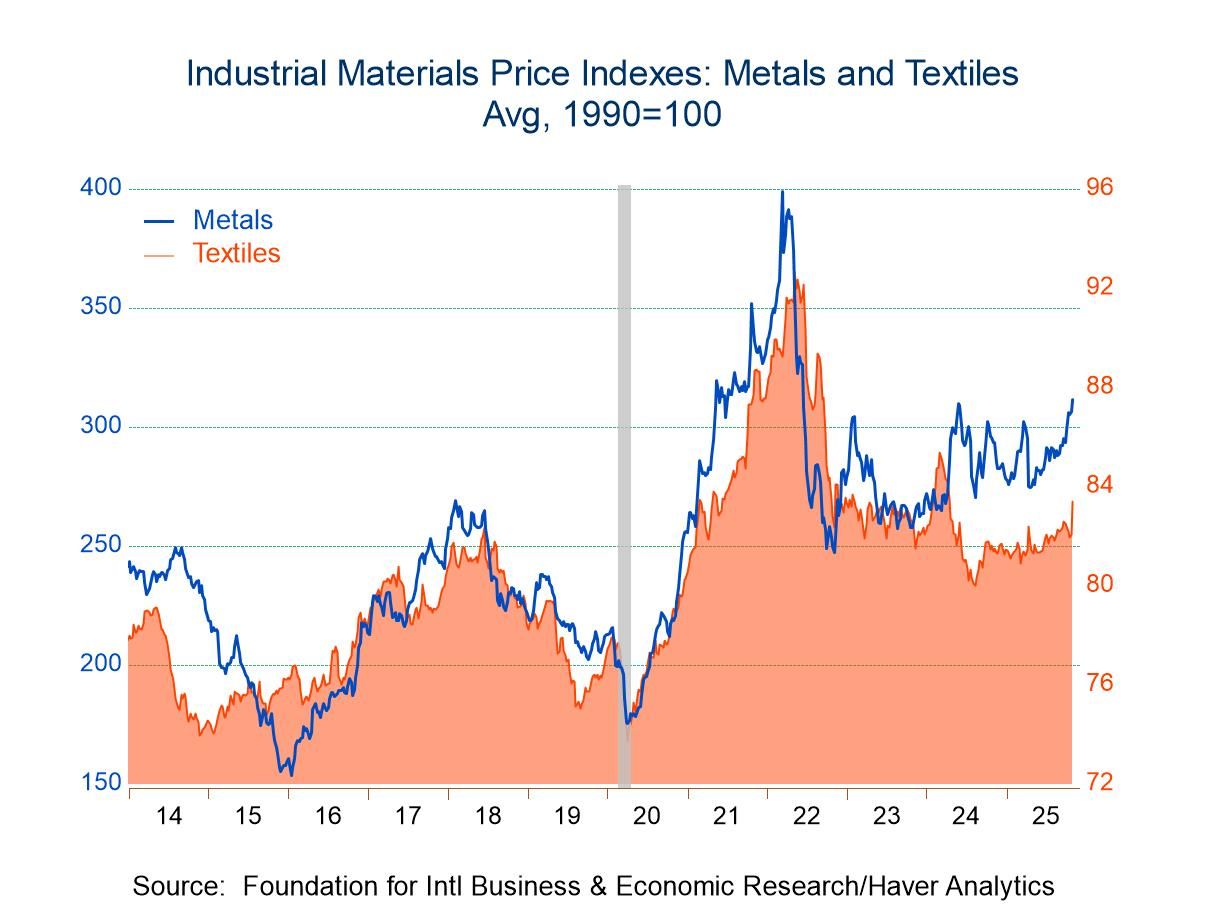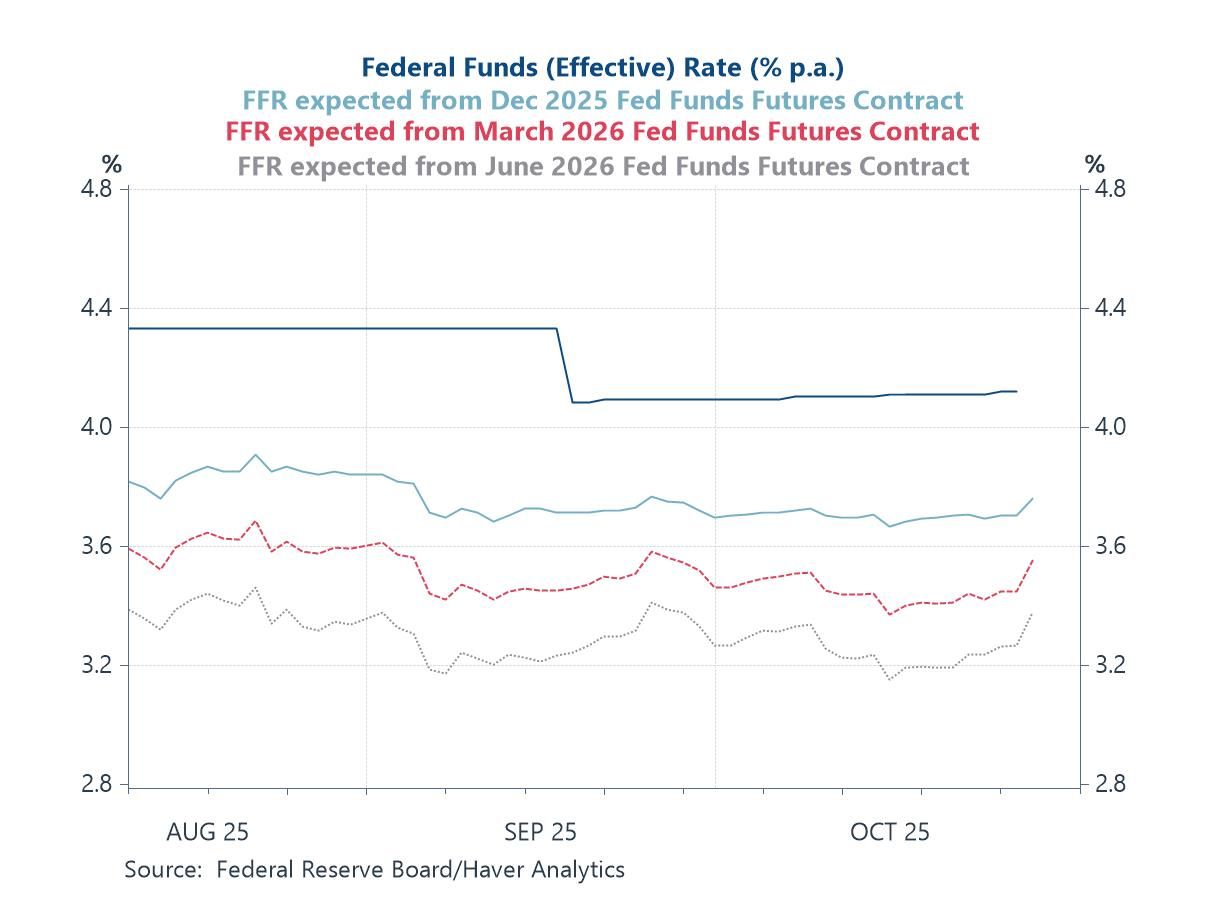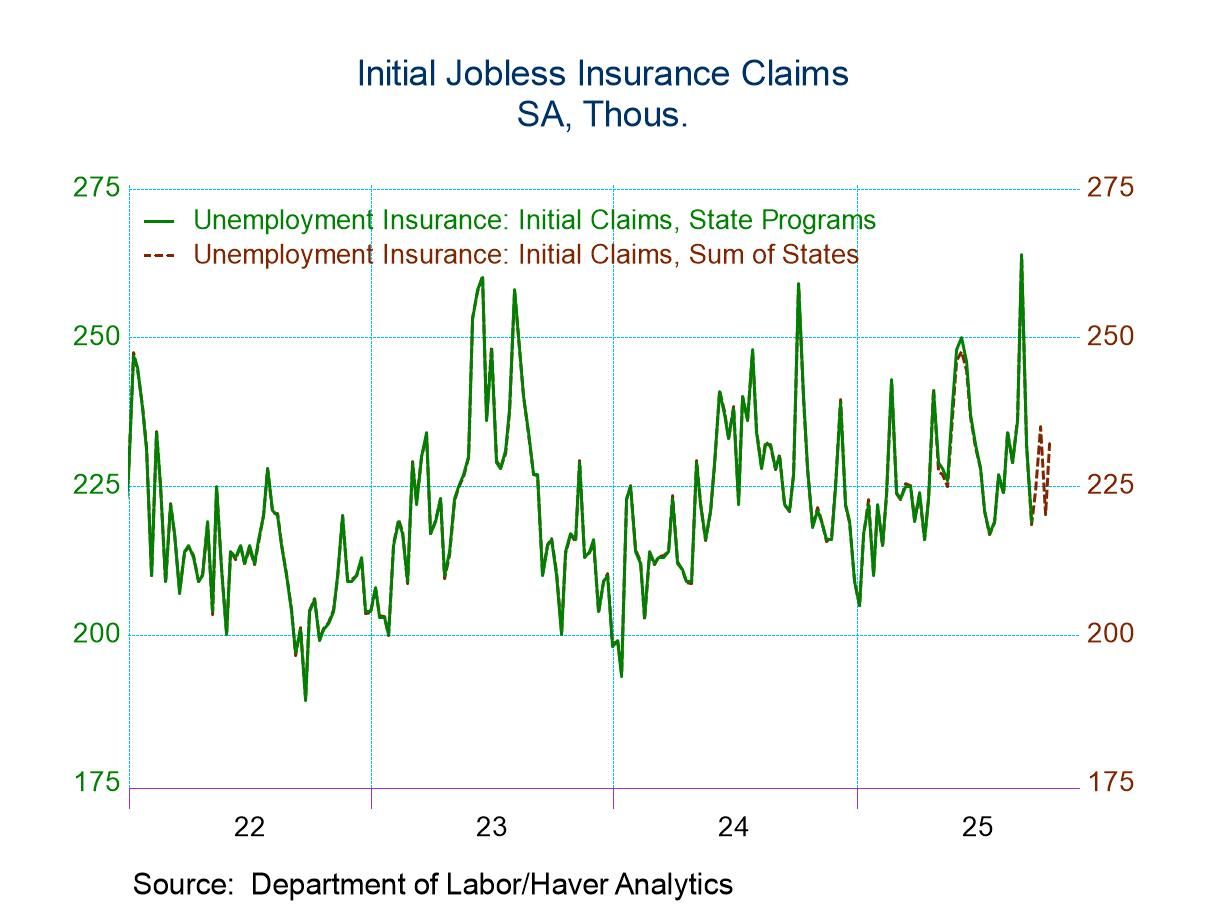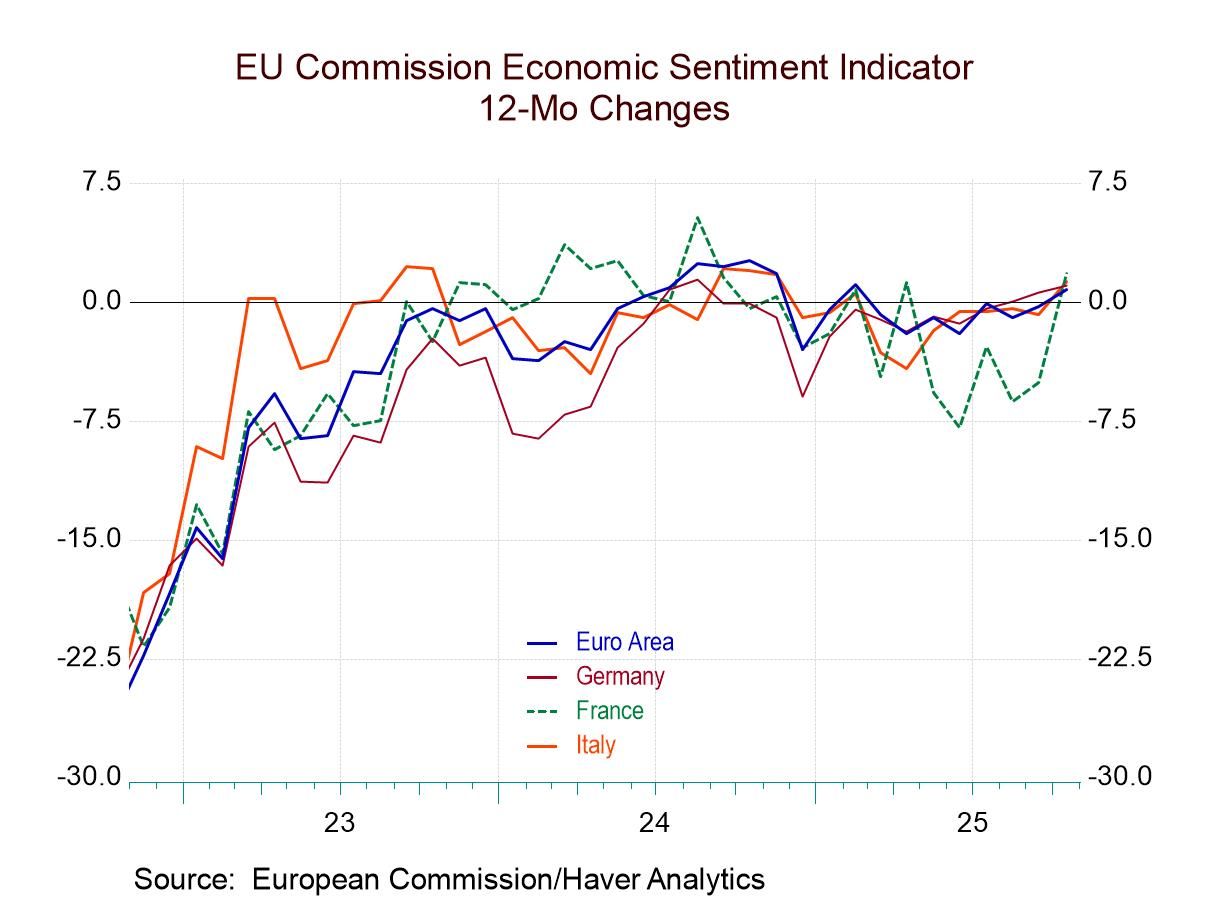 Global| Oct 03 2023
Global| Oct 03 2023Manufacturing PMIs Are Split in September, But Mostly Weaken

Momentum: In September, 10 of 18 manufacturing PMI observations across countries and areas listed in the table deteriorated. Over three months, half of the observations deteriorated compared to their values over six months. Over six months, 8 of 18 diffusion metrics-slightly less than half- deteriorated compared to their value over 12 months. However, over 12 months, only four observations improved leaving 14 in the deteriorating mode. Conditions are still considerably mixed between improvement and deterioration, but they are clearly tilted toward more deterioration than toward more improvement, indicating that globally manufacturing continues to be under pressure.
Sequential comparisons of expansions vs. contraction: As to actual expansion or contraction on the PMI gauge, 14 of 18 show contraction in September while 12 show contraction in August and 14 show contraction in July. The preponderant result shows contraction, meaning PMI values are below 50. Looking at broader comparisons, over three months 13 of 18 reporters have values showing contraction, over six months 12 of 18 show contraction and over 12 months 11 of 18 are indicating contraction.
Assessment favors WEAKNESS: While the statistics about improvement versus deterioration are somewhat more mixed, it's clear that for most countries whether they are improving or deteriorating slightly they are nonetheless still in the contraction zone as far as the manufacturing sector is concerned. The global manufacturing economy remains under pressure.
The strongest: Only Mexico, Russia, Indonesia, and India register manufacturing PMI values above 50 over all three horizons of three months, six months, and 12 months. In the case of Russia, I would say that statistic is suspect, but it's the one that's reported and having the alternative it's the one that I use.
The weakest: Germany is the only country with readings over three months, six months, and 12 months that all are below a diffusion value of 45.
Broader, five-year rankings- The queue percentile standings for this group of countries are extremely weak; the median reading, in fact, is 26.9%. The median sits barely above the lower quartile which is an extremely weak position. Russia has the strongest percentile standing at 98.1% but probably only if you're willing to suspend disbelief. After that, the highest reading is India's 82.7%, Indonesia's 73.1%, and Mexico's 69.2% China has a 59.6 percentile standing in September. However, among the largest industrialized countries, the readings are the weakest. The euro area has a standing in its 7.7 percentile, which includes Germany at a 7.7 percentile standing, and France at a 5.8 percentile standing. The U.S. has a 25-percentile standing. The U.K. has a 5.8 percentile standing - the same as Canada. Large economies have extremely weak readings for the most part. China is the exception as the only large economy with a standing above its 50th percentile.
Relativity... And while I like the standings data because it accounts for structural historic differences, it's also true that relativity in some cases is not the bets metric. This high standing for China, for example, refers to a manufacturing PMI value of 50.2 which places it barely in expanding territory. Since we have been in a prolonged period of impacted growth, when rankings over the last five years we are comparing everything to a period in which most of the readings have been extremely low except for a few relatively strong observations that occurred when countries temporarily broke out strongly from the Covid lockdowns.

Summing up On balance, manufacturing sectors globally remain weak; there is not much evidence of improving momentum. Most industrial sectors are showing contraction using the PMI gauge as the arbiter of growth. Globally conditions remain challenging with the Russia-Ukraine war still in full gear and with inflation over the top of all major money-center central bank targets. Inflation has broadly showed signs of slowing and in some cases, relatively more rapid slowing than what had been in train; however, with oil prices moving back up it's far too soon for any central banks to think about declaring any sort of victory or even to seriously ponder putting policy on a sustained hold. The U.S. and the European Central Bank skipped the opportunity to hike rates at the last meetings. But officials are not saying that policy has gone on hold. In the U.S., officials are still predicting that there will be at least one more rate hike, but given the way the Fed uses its announcements to try to manipulate opinion, it's not clear that the Fed members truly expect to have another rate hike or whether they're just trying to hold markets back from rallying because that's what will happen when they think the Fed is done hiking rates. Markets in this tightening episode have been very quick to assume that central banks were going to be done hiking rates long before they were done hiking rates. In part, this is because this high inflation period was preceded by a prolonged period of low, stable inflation. Markets may now be dominated by people who think that the norm for inflation is for to gravitate back to 2%. A broader view of history certainly challenges that view. And the post-Covid world is a different one from the pre-Covid world as well. But for now, there's a lot of underlying optimism about how inflation is going to behave if it's left alone. And this is an inconvenient time to have inflation optimism about the future since current inflation has been so overcooked and requires action to reduce it, not optimism.
Robert Brusca
AuthorMore in Author Profile »Robert A. Brusca is Chief Economist of Fact and Opinion Economics, a consulting firm he founded in Manhattan. He has been an economist on Wall Street for over 25 years. He has visited central banking and large institutional clients in over 30 countries in his career as an economist. Mr. Brusca was a Divisional Research Chief at the Federal Reserve Bank of NY (Chief of the International Financial markets Division), a Fed Watcher at Irving Trust and Chief Economist at Nikko Securities International. He is widely quoted and appears in various media. Mr. Brusca holds an MA and Ph.D. in economics from Michigan State University and a BA in Economics from the University of Michigan. His research pursues his strong interests in non aligned policy economics as well as international economics. FAO Economics’ research targets investors to assist them in making better investment decisions in stocks, bonds and in a variety of international assets. The company does not manage money and has no conflicts in giving economic advice.






